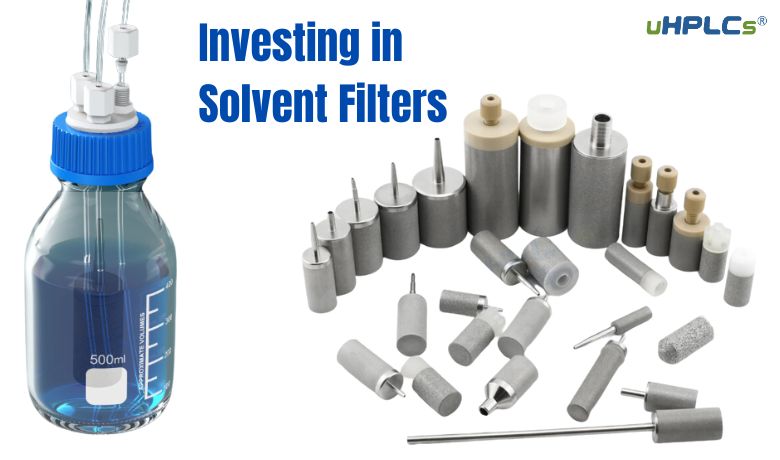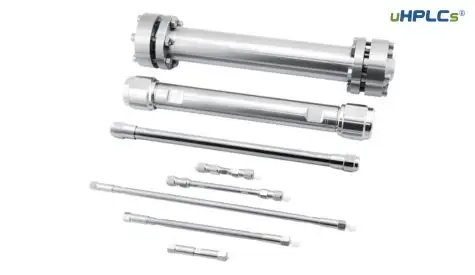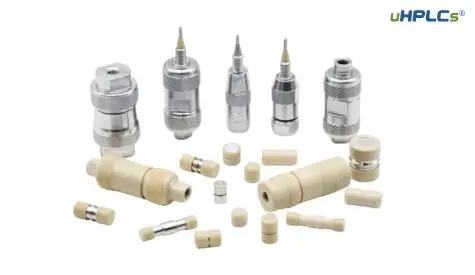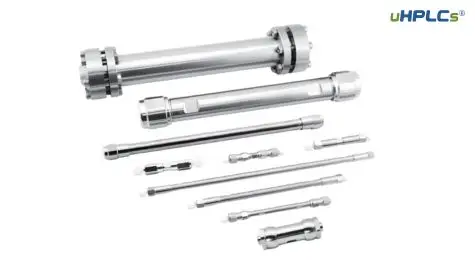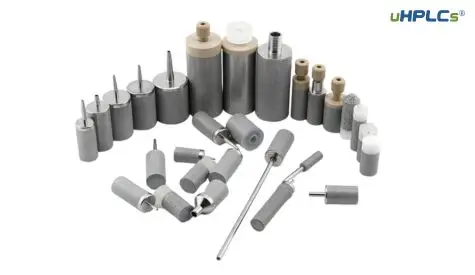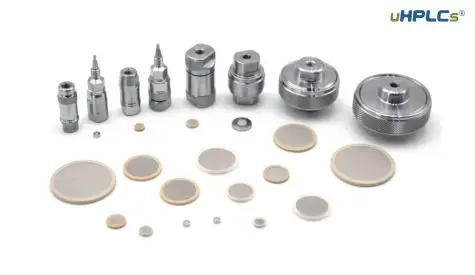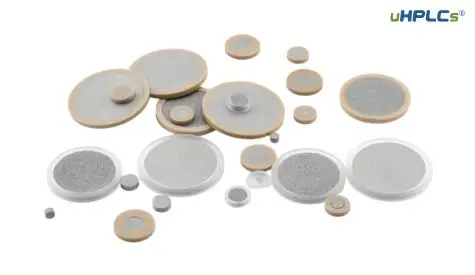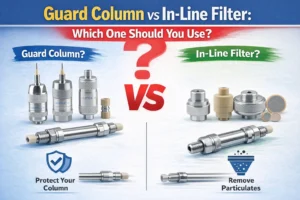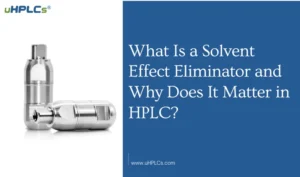Introduction
High-Performance Liquid Chromatography (HPLC) is a powerful analytical technique widely used in various fields, including chemistry, biochemistry, and pharmaceuticals. It involves the separation of components in a mixture based on their interactions with a stationary phase and a mobile phase. The mobile phase, typically a liquid solvent, plays a crucial role in the separation process.
Solvent filters are essential components in HPLC systems. They serve as barriers to prevent contaminants, particulates, and other impurities from entering the HPLC system. These impurities can cause significant problems, such as:
- Clogged columns: Particulates can clog the HPLC column, reducing its efficiency and lifespan.
- Baseline noise: Contaminants in the mobile phase can introduce noise into the chromatogram, making it difficult to accurately analyze the sample.
- Instrument damage: Impurities can damage sensitive components of the HPLC system, leading to costly repairs or replacements.
- Inaccurate results: Contaminants can interfere with the separation process, resulting in inaccurate analytical data.
Understanding Solvent Filters
Definition and Purpose
Solvent filters in HPLC are essential components that act as barriers, preventing contaminants, particulates, and other impurities from entering the HPLC system. These impurities can significantly degrade the performance of the system, leading to inaccurate results and costly repairs. By filtering the mobile phase before it enters the column, solvent filters help to:
- Protect the HPLC column: Prevent clogging and damage to the column, extending its lifespan.
- Ensure accurate results: Reduce baseline noise and interference from contaminants, leading to more reliable analytical data.
- Maintain instrument performance: Minimize downtime and costly repairs caused by impurities.
Types of Solvent Filters
There are several types of solvent filters commonly used in HPLC, each with its own advantages and disadvantages:
1. Membrane Filters:
Made of a porous membrane material (e.g., nylon, PTFE, PVDF) with specific pore sizes.
Provide excellent filtration efficiency and are suitable for a wide range of applications.
Available in various pore sizes to meet different filtration requirements.
2. Inline Filters:
Integrated directly into the HPLC system, often between the solvent reservoir and the pump.
Provide convenient and efficient filtration without the need for external filters.
Typically use a sintered metal or fritted glass element for filtration.
3. Cartridge Filters:
Disposable filters contained within a housing or cartridge.
Easy to replace and offer a high level of filtration efficiency.
Available in various sizes and materials to suit different needs.
4. Disc Filters:
Flat filters with a circular shape.
Often used in conjunction with a filter holder.
Provide good filtration performance and are relatively inexpensive.
The choice of filter type depends on factors such as the required filtration efficiency, the nature of the contaminants, and the specific requirements of the HPLC application.
The Role of Solvent Filters in HPLC Performance
Enhancing Chromatographic Results
Solvent filters play a crucial role in optimizing HPLC performance by:
- Preventing column clogging: By removing particulates and other contaminants from the mobile phase, filters help to prevent clogging of the HPLC column. This ensures consistent flow rates and prevents degradation of column efficiency.
- Reducing baseline noise: Contaminants in the mobile phase can introduce noise into the chromatogram, making it difficult to accurately detect and quantify analytes. Filters help to minimize baseline noise by removing impurities that can interfere with the detection process.
- Improving peak resolution: Good peak resolution is essential for accurate quantification in HPLC. By reducing the presence of contaminants, filters can improve peak shape and separation, leading to better resolution and sensitivity.
- Protecting the HPLC system: Filters help to safeguard other components of the HPLC system, such as the pump and detector, from damage caused by contaminants.
Impact on Baseline Noise and Peak Resolution
- Baseline noise: Contaminants in the mobile phase can introduce fluctuations in the baseline of the chromatogram. These fluctuations can make it difficult to accurately determine the baseline and measure peak heights or areas. By removing contaminants, filters help to reduce baseline noise and improve the signal-to-noise ratio.
- Peak resolution: Good peak resolution is achieved when analytes are well-separated from each other. Contaminants in the mobile phase can interfere with the separation process, leading to overlapping peaks or poor resolution. Filters help to improve peak resolution by removing impurities that can cause peak broadening or tailing.
In summary, solvent filters are essential components in HPLC systems that contribute significantly to improved chromatographic performance. By preventing column clogging, reducing baseline noise, and enhancing peak resolution, filters help to ensure accurate and reliable analytical results.
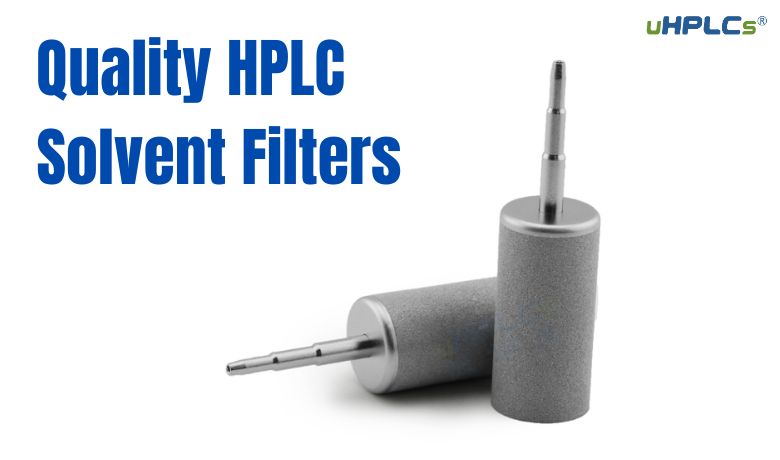
Long-Term Benefits of Quality Solvent Filters
There are many benefits to use Porous stainless steel filter for Solvent, we list 3 kinds of benefits, hope you can understand more about this is really good for your HPLC System.
1.Improved System Longevity
- Reduced wear and tear on pumps and columns: High-quality filters help to protect the HPLC system by preventing contaminants from reaching sensitive components. This can significantly reduce wear and tear on pumps, columns, and other parts of the system, extending their lifespan.
2.Cost Savings
- Decreased maintenance and replacement costs: By preventing damage to the HPLC system, quality filters can help to reduce the need for costly repairs and replacements. This can result in significant cost savings over the long term.
3.Enhanced Data Integrity
- Consistency and reliability in results: High-quality filters help to ensure consistent and reliable analytical results by minimizing the impact of contaminants on the chromatographic process. This can lead to improved data integrity and increased confidence in the accuracy of the results.
Choosing the Right Solvent Filter
When selecting a solvent filter for your HPLC system, several factors you should be considered:
1. Pore Size:
- The pore size of the filter determines the size of particles that can be retained.
- A smaller pore size will provide more stringent filtration, but can also increase flow resistance.
- The appropriate pore size depends on the specific application and the nature of the contaminants.
2. Filter Material:
- The filter material should be compatible with the solvents and analytes being used.
- Common filter materials include nylon, PTFE, PVDF, and cellulose acetate.
- Nylon and PTFE are often used for general-purpose filtration, while PVDF and cellulose acetate are more suitable for specific applications, such as biomolecules or aggressive solvents.
3. Filter Compatibility:
- The filter should be compatible with the solvents, analytes, and other components of the HPLC system.
- Some filter materials may be incompatible with certain solvents or can absorb analytes, leading to inaccurate results.
Recommendations Based on Common Applications:
- General-purpose applications: Nylon or PTFE filters with pore sizes ranging from 0.45 to 2.0 µm are often suitable.
- Biomolecules: Cellulose acetate or PVDF filters with pore sizes around 0.22 µm are commonly used to prevent protein adsorption and ensure accurate analysis of biomolecules.
- Aggressive solvents: Filters made of chemically resistant materials, such as PTFE or PVDF, are recommended for applications involving strong acids, bases, or organic solvents.
- High-purity applications: Filters with very low extractable levels, such as those made of high-purity PTFE or PVDF, are required for applications that demand the highest level of purity.
By carefully considering these factors and selecting the appropriate filter, you can optimize the performance of your HPLC system and ensure the accuracy and reliability of your analytical results.
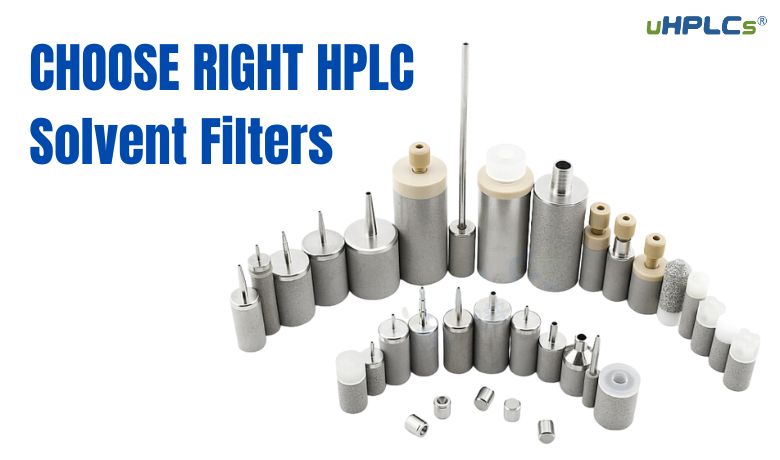
Maintenance Tips for Solvent Filters
Because maintenance also very important for the lifespan of HPLC Solvent filter, some points you should care. please check it.
1.Regular Checks and Replacement Schedules
- Visual inspections: Regularly inspect filters for signs of clogging, discoloration, or damage.
- Pressure monitoring: Monitor the pressure drop across the filter. A significant increase in pressure may indicate clogging or fouling.
- Replacement schedule: Develop a regular replacement schedule based on the filter type, application, and the frequency of use. Factors to consider include the filter material, pore size, and the nature of the solvents and analytes being used.
2.Cleaning Methods and Best Practices
- Cleaning frequency: The frequency of cleaning depends on the filter type, the nature of the contaminants, and the specific application. Some filters may require cleaning after each use, while others may be cleaned less frequently.
- Cleaning methods: Cleaning methods can vary depending on the filter material and the type of contaminants. Common methods include:
- Sonication: For removing particulate matter from filters made of materials such as nylon or PTFE.
- Backwashing: For removing contaminants from filters with a larger pore size.
- Chemical cleaning: For removing specific types of contaminants, such as organic matter or inorganic salts.
- Cleaning solutions: The choice of cleaning solution depends on the filter material and the type of contaminants. Common cleaning solutions include:
- Water: For removing water-soluble contaminants.
- Organic solvents: For removing organic matter.
- Mild acids or bases: For removing inorganic salts.
- Proper handling: Handle filters carefully to avoid damage and contamination. Avoid touching the filter surface directly, as this can introduce contaminants.
so above these maintenance tips, you can help to ensure the optimal performance of your solvent filters and prolong their lifespan. hope it will be helpful.
Conclusion
Investing in high-quality solvent filters is crucial for enhancing the longevity and performance of your HPLC system.
By reducing maintenance costs and improving data integrity, these filters contribute significantly to the overall efficiency of your chromatography processes.
We encourage you to assess your current filtration systems to ensure they meet your operational needs. For any inquiries or assistance, feel free to contact us at sales@uhplcs.com.

